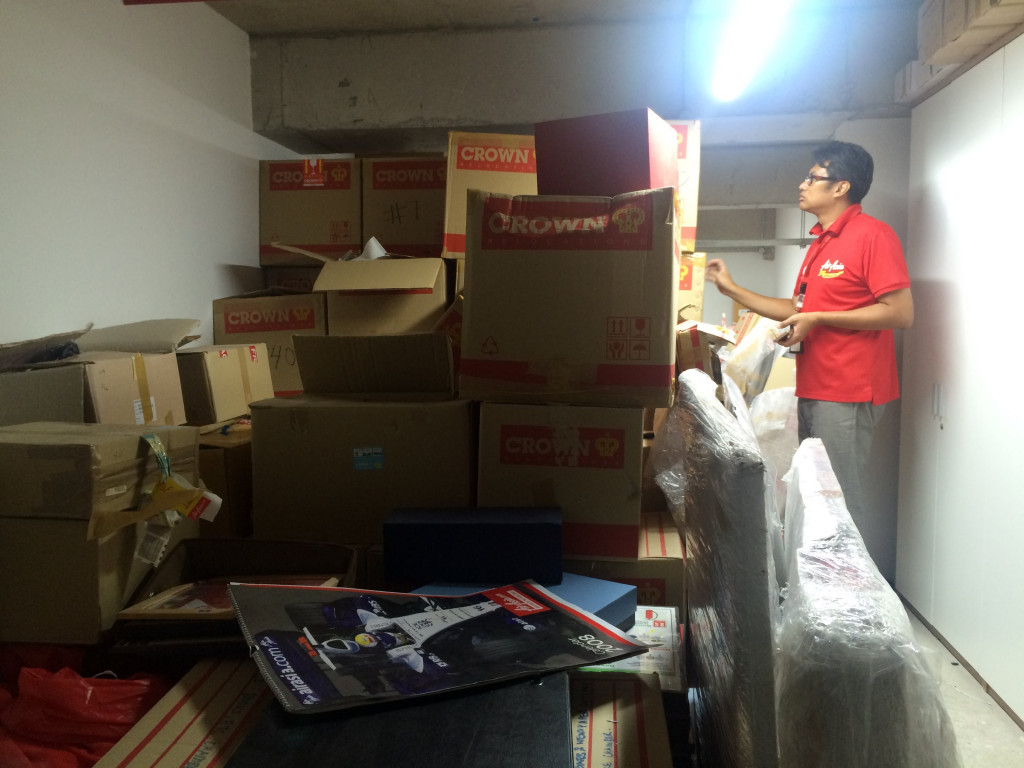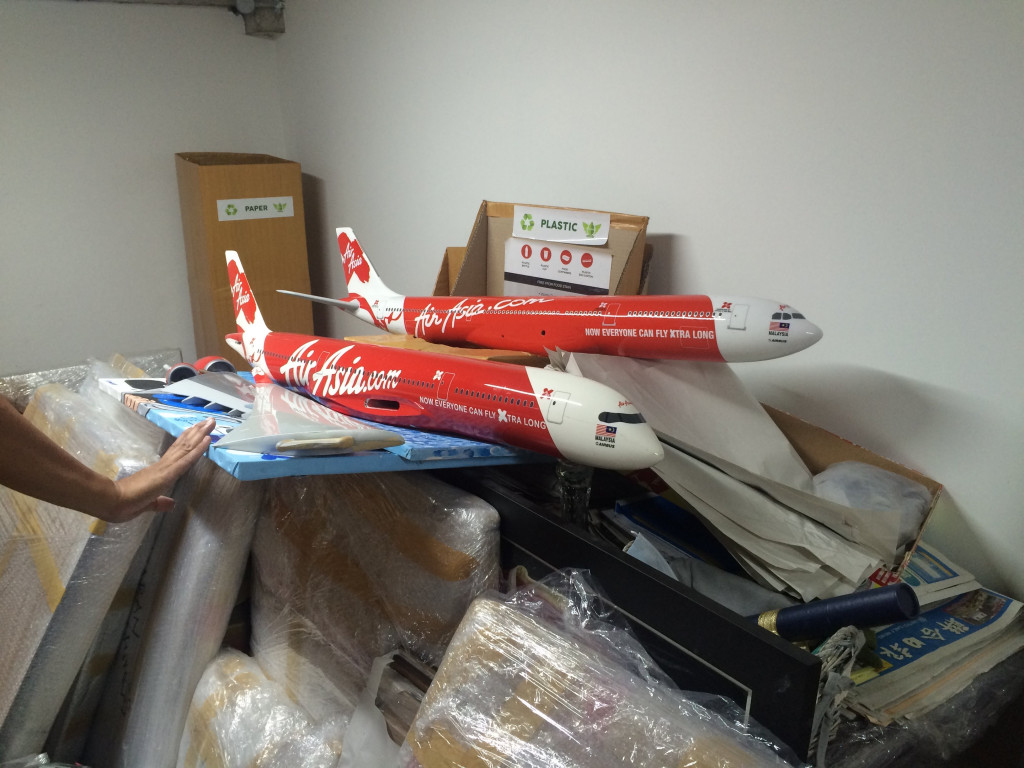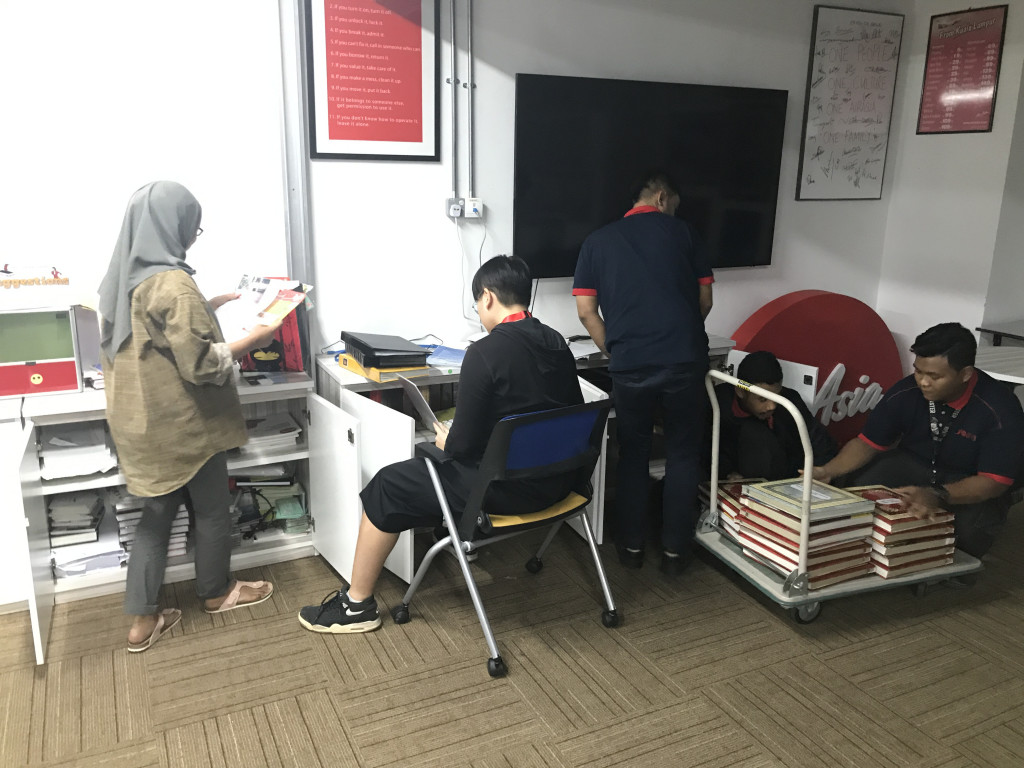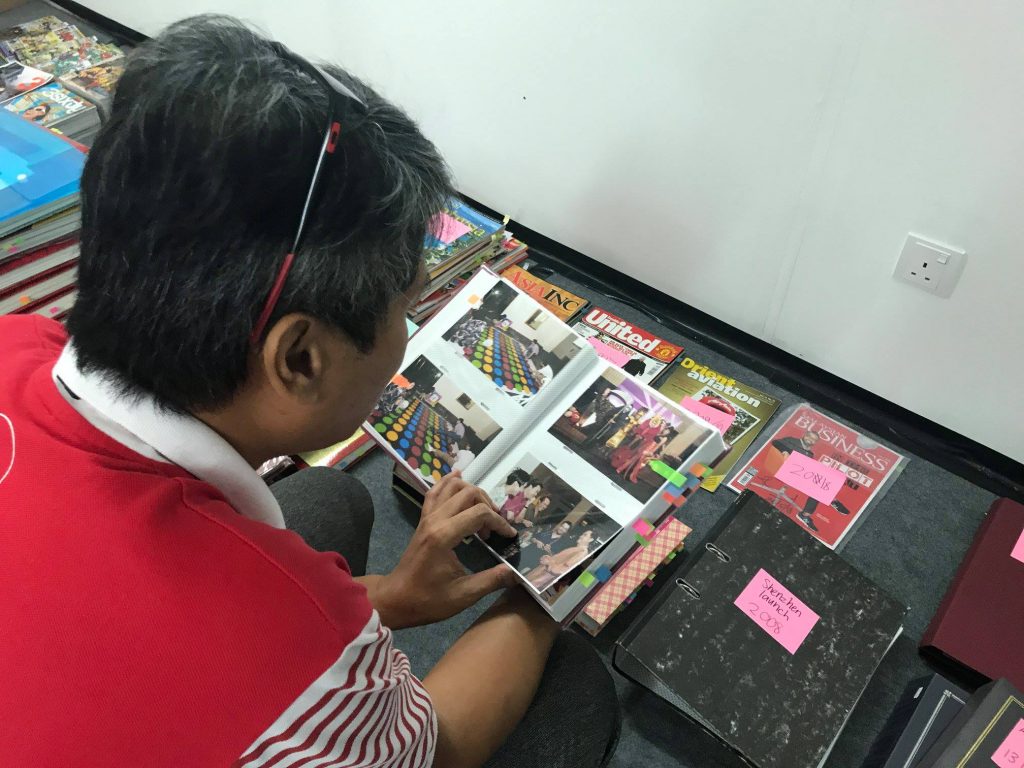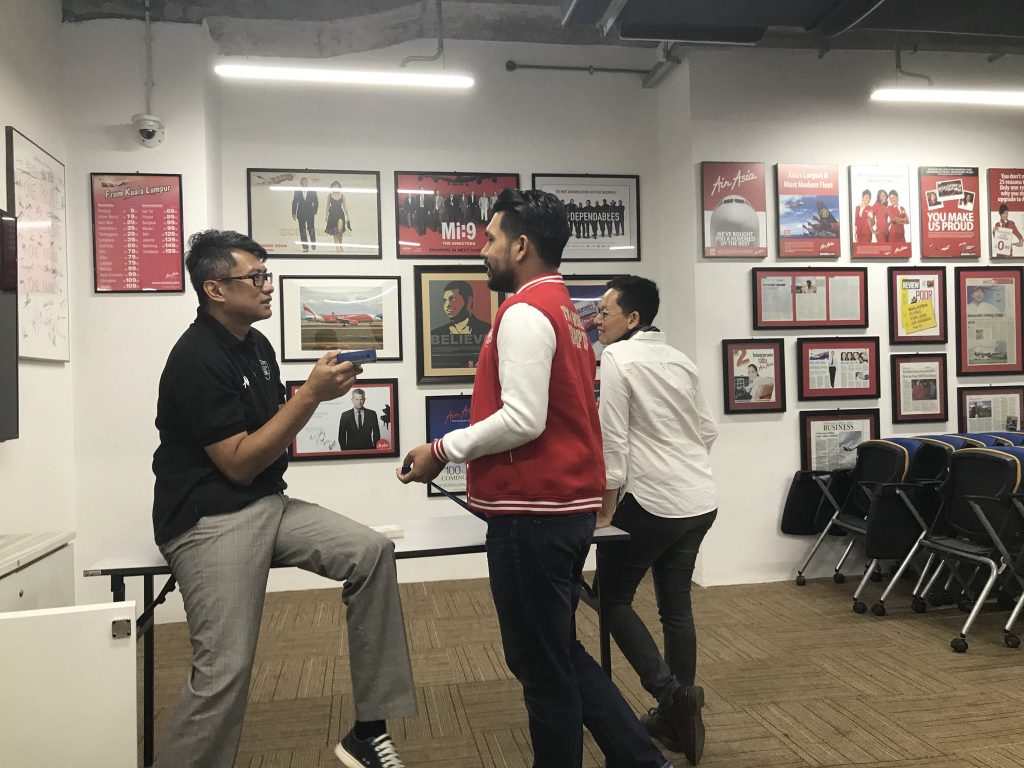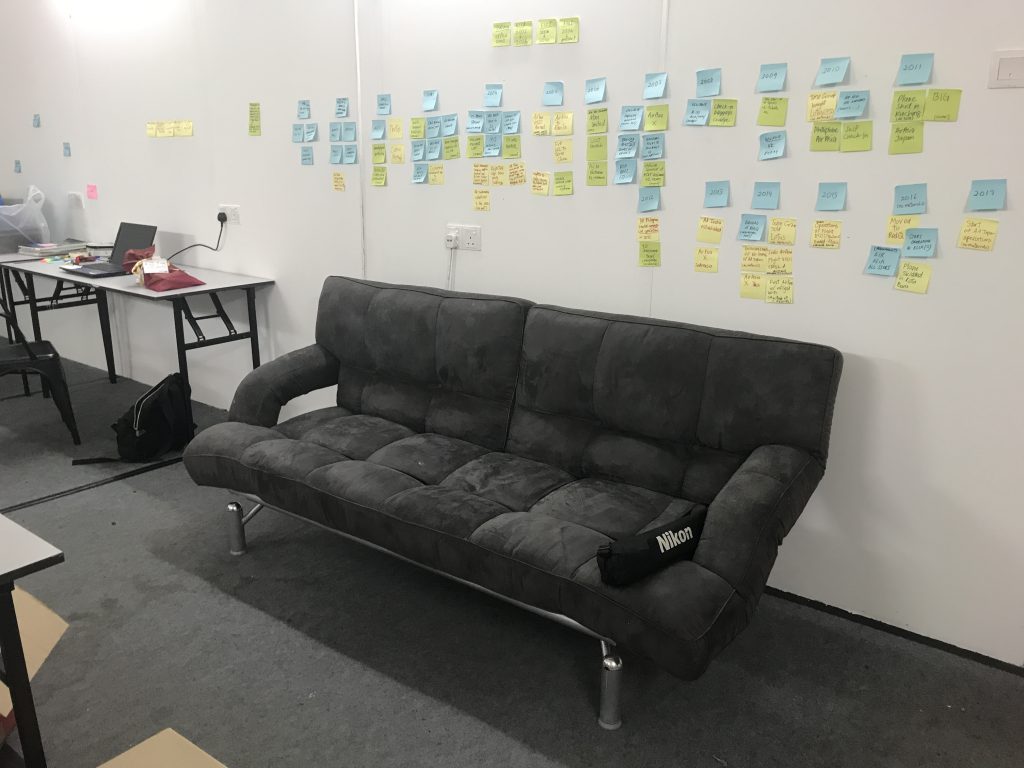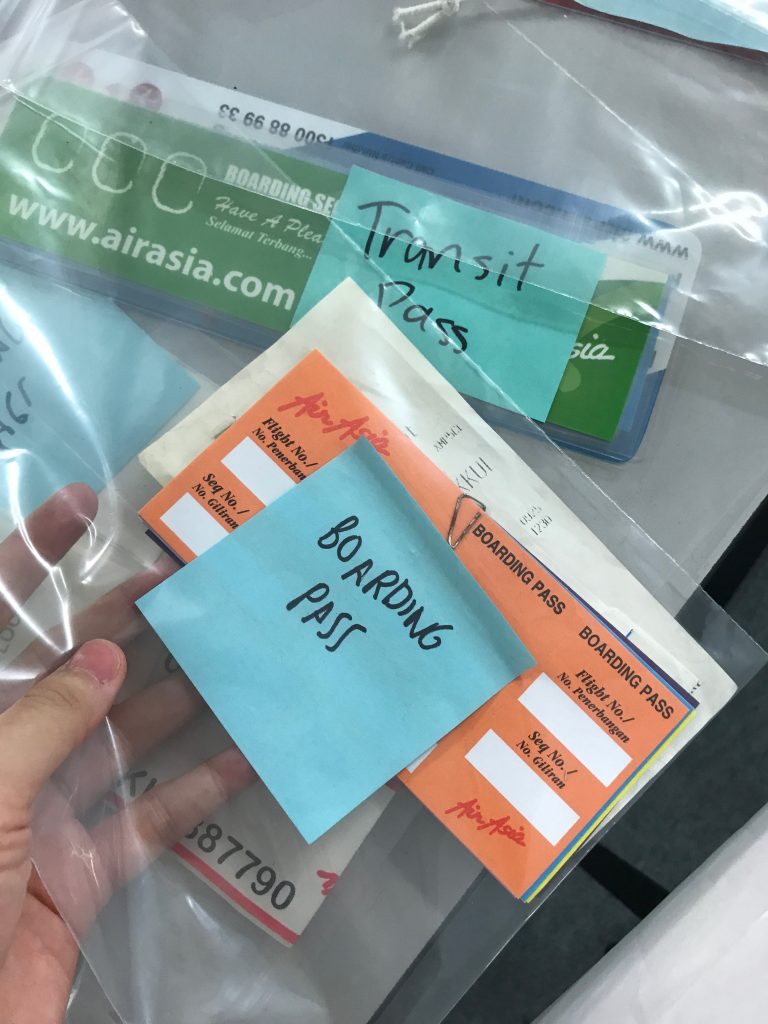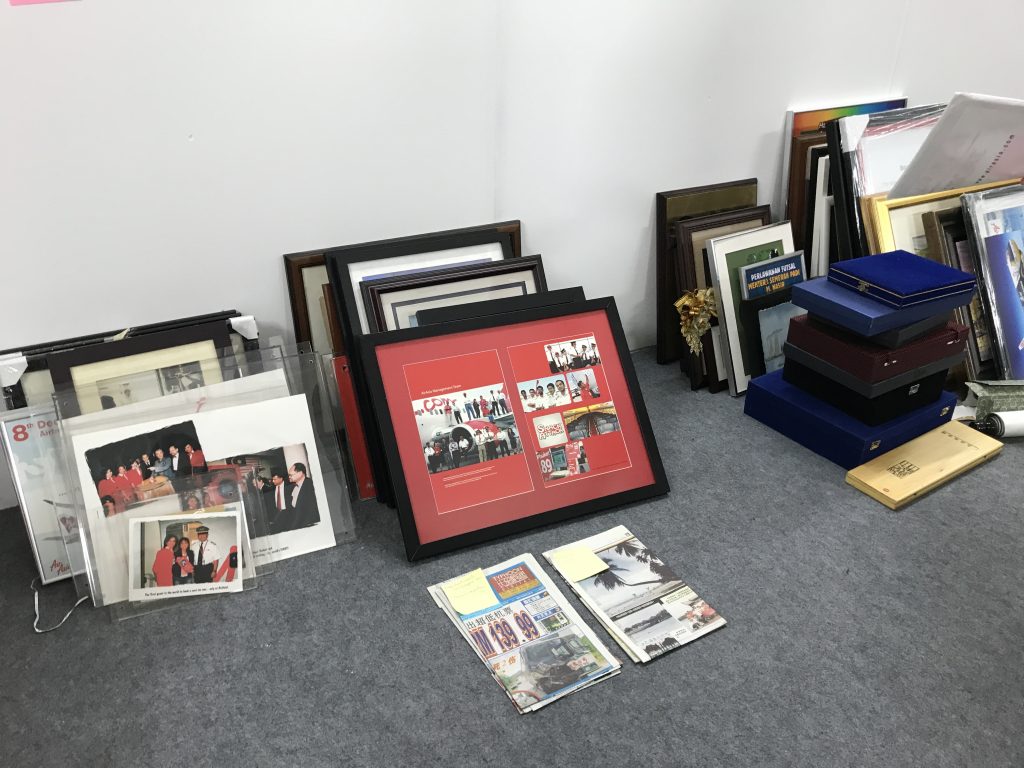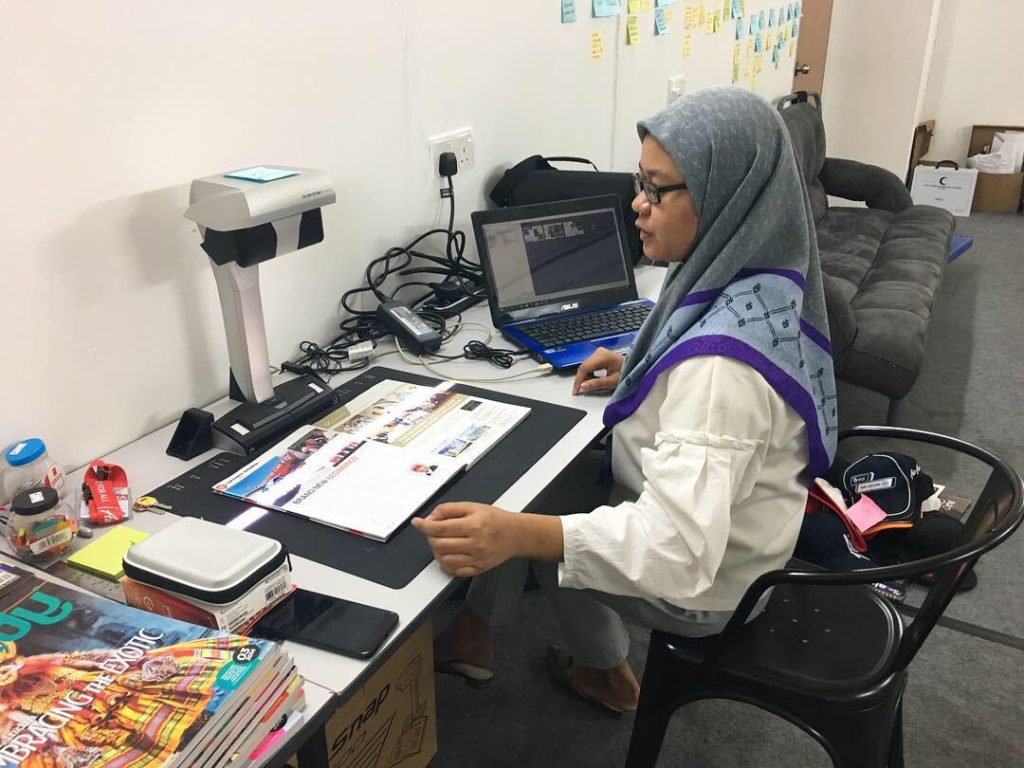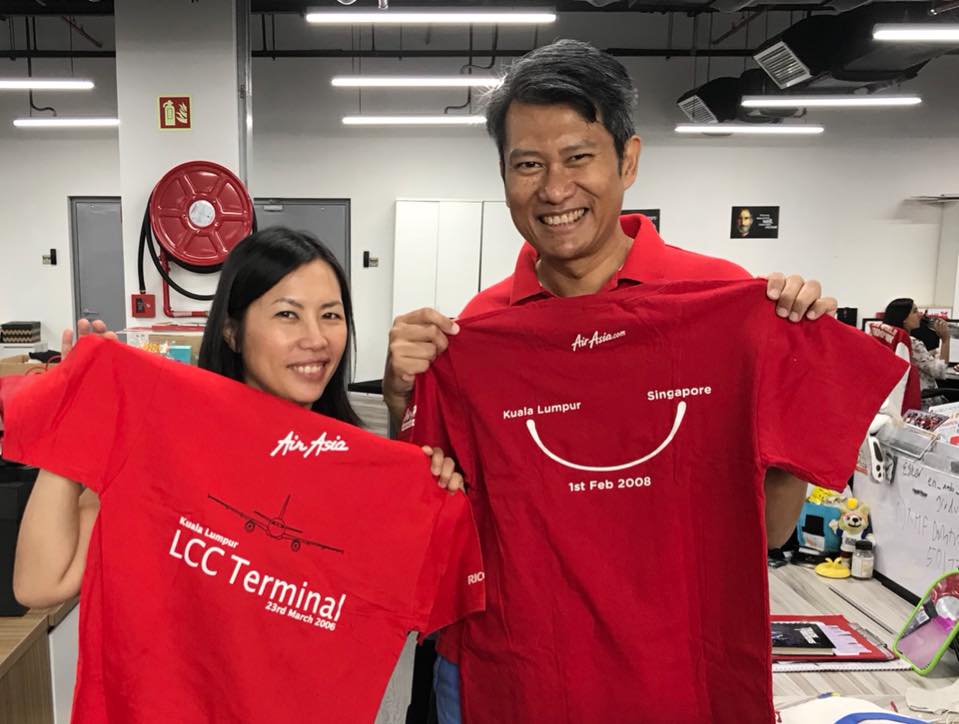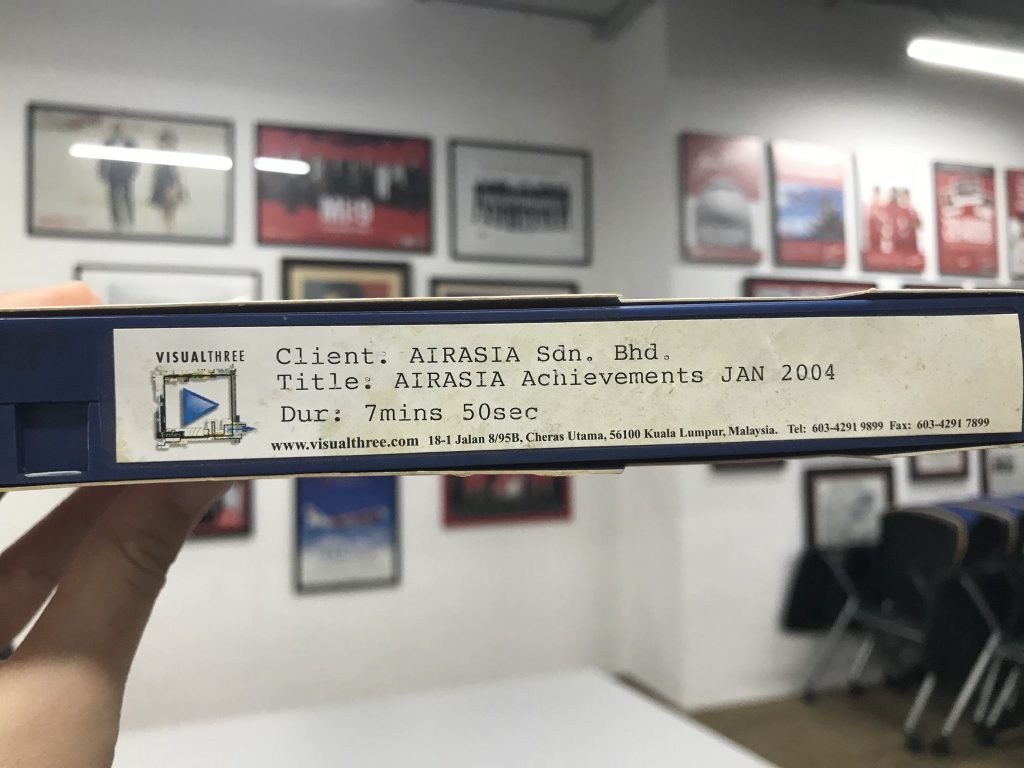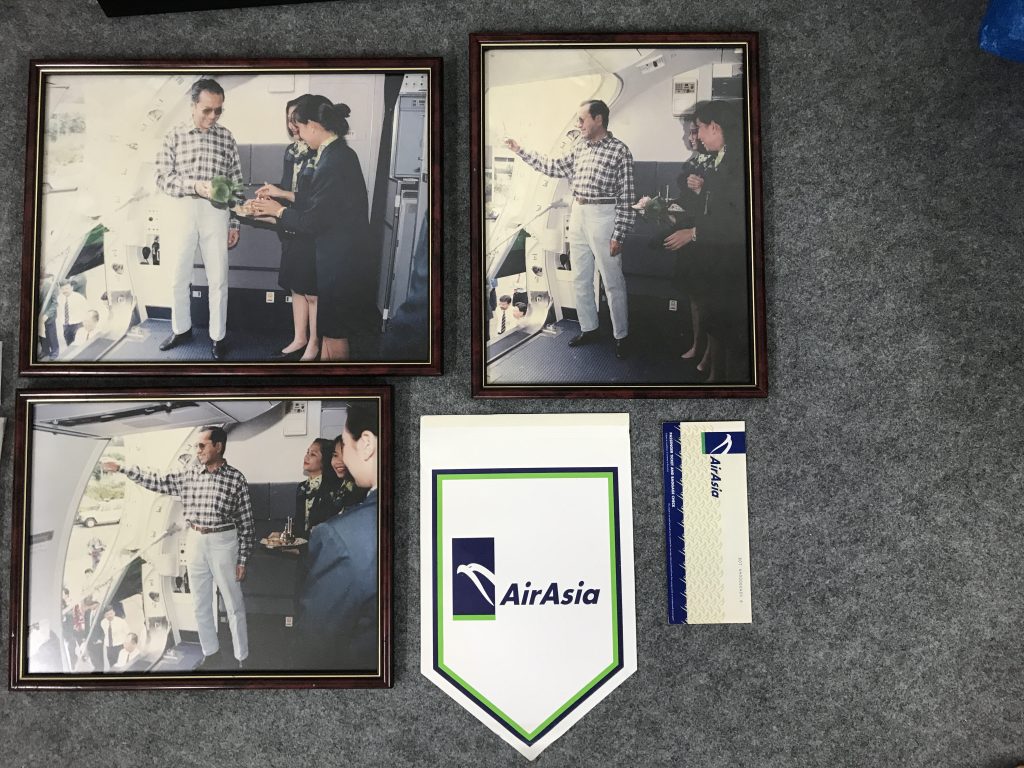Throughout the years, we have moved many times. From making do in Tony’s office with two desks to Subang Airport, to a dungeon-like space at KLIA, to having some of the best times of our lives at the low-cost carrier terminal (LCCT), and then, eventually, moving to our current home at RedQ, klia2. Things have been packed, unpacked, packed again, and filed away. But now, it is time to make sure that all of these memorabilia that make up the AirAsia story have a place to call home too.
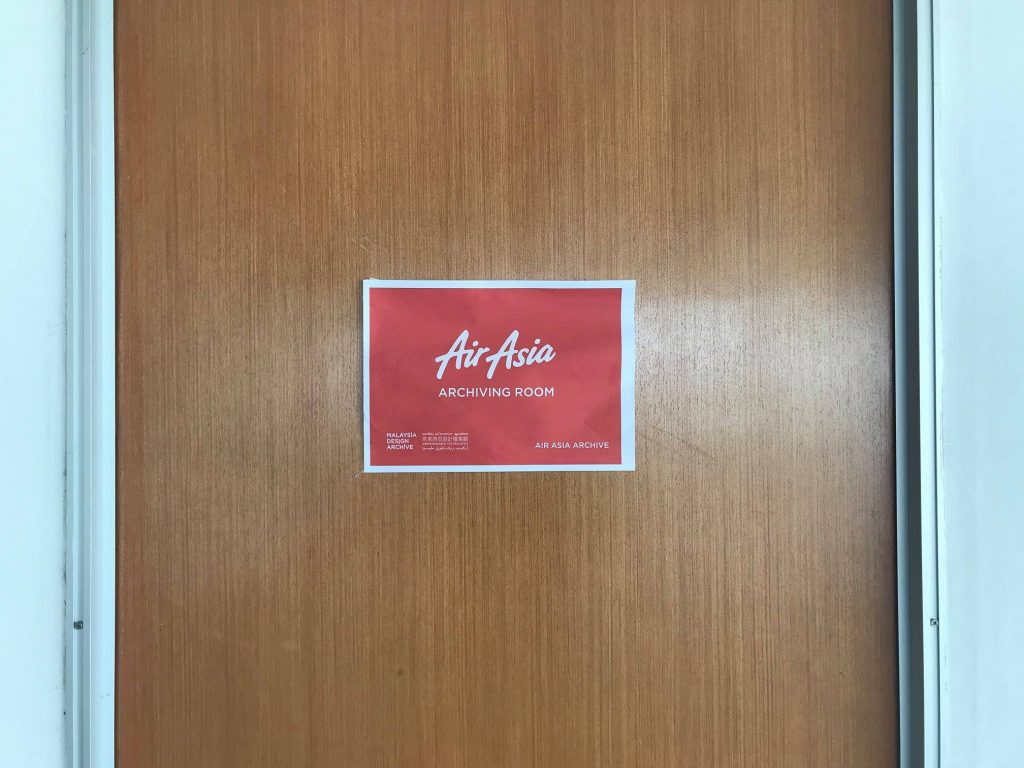
Faizul was our first historian. Throughout his time here, Faizul has played many roles, from a cabin crew, to cabin crew manager, safety manager, larger-than-life emcee, and all-around company legend, Faizul was one of the first hires by Tony. The AirAsia Museum was one of his biggest projects, and he was always listening, collecting, and sharing stories. The digital archive was part of his vision for telling the AirAsia story and it was our honour to be part of it.
The Beginning
In early 2017, we began searching for project partners and eventually began working with the Malaysia Design Archive team to consolidate, digitise and build the AirAsia Museum.
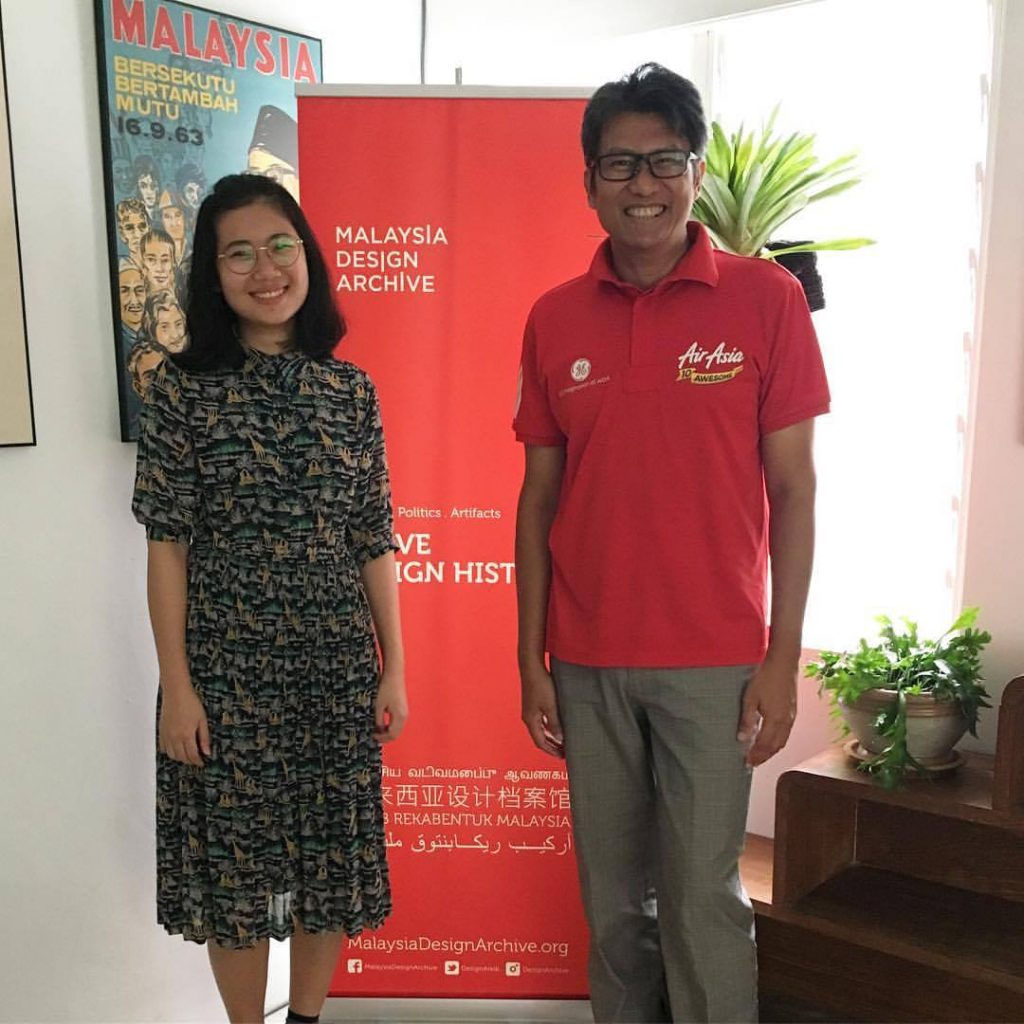
The junior archivists Pei Ying and Nadia, led by head archivist Ezrena Marwan, spent months patiently organising, sorting, cataloguing, and timelining 19 years of our historical records. It was time-consuming and painstaking work, yet a rewarding learning experience for all of us. Ezrena shares, ‘We find that it is important for organisations to archive their corporate history and to recognise their own memory as part of their organisational heritage and how they may have influenced the field. We have learned so much about the history of aviation in Malaysia and around the region.’
The Process
First, the team categorised the items (tapes, frames, certificates, postcards, cutlery, aircraft models, awards, and so on), and slowly began to create a structure to the collection as more items were discovered. Gradually, the walls filled up with Post-It notes.
After sorting, the next stage began. The team catalogued the items (description, dimension, condition of the item), and then scanned or photographed them to be uploaded to the online database. For some of the larger or more significant items, we arranged for a separate shoot in the office studio. We also took a field trip to visit our training academy, inflight kitchen, and the engineering warehouse. There was so much more history to be discovered.
People pass, things disintegrate and nothing lasts forever. In 2019, Faizul was unable to continue working on the project and an old friend and ex-Allstar, Joyce Lai returned and stepped up to continue with the archive and the stories.
‘Keep a historian close. Compiling the history of an organisation can be daunting. More so if you are not familiar with their stories, cultures, and missions. A company historian can offer several guides on timeline building, verifying facts as well as delivering relatable anecdotes. The event, people, and objects that appear in the stories also can be a reference point to unearth more valuable materials for the archive.’
Nadia Nasaruddin, Junior Archivist, MDA
The AirAsia Museum
Throughout the project, so many people have supported us on this journey, shared their stories, spent the time to help with spring cleaning and sorting, excavating the storerooms, contributed their collections, and made the dream of this archive a reality. It is all of you, our guests, and all the wonderful Allstars who have worked at AirAsia through these years, that have made this possible.
From reversible bucket hats to original sketches of our cabin crew uniform, or our very first sale, this is just the beginning. Take your time, have a look around, and we hope you enjoy finding out about this little airline that could. If you have a story to share, get in touch! We’d love to geek out over any AirAsia memorabilia you may have.
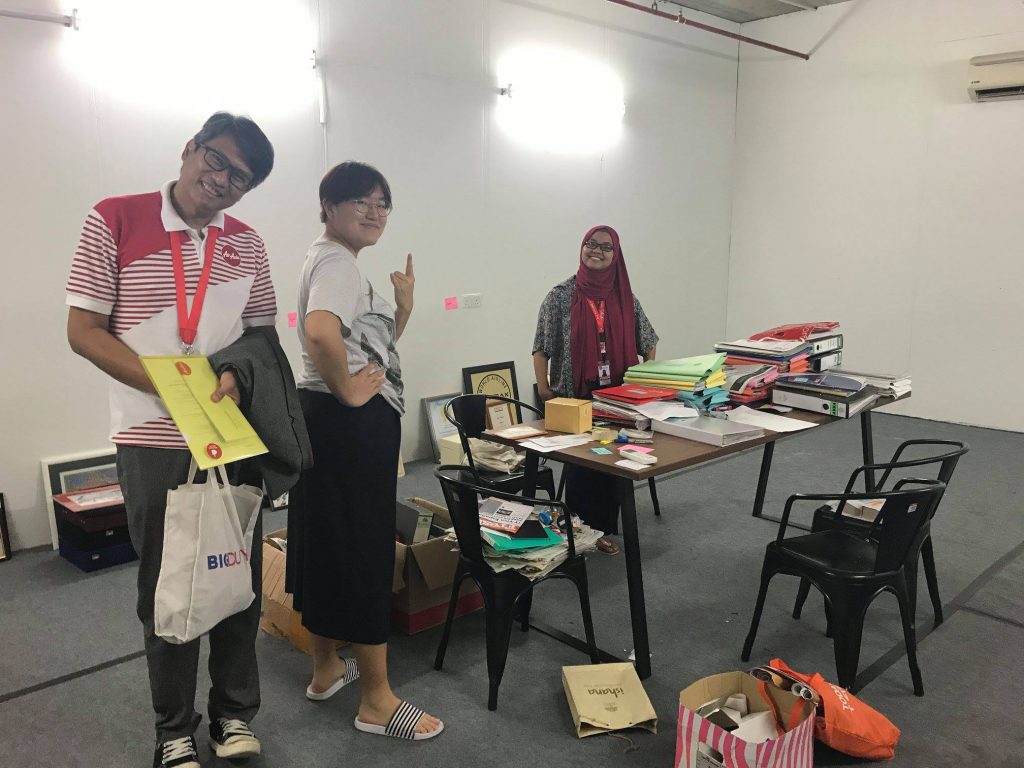
Read more about us here.

